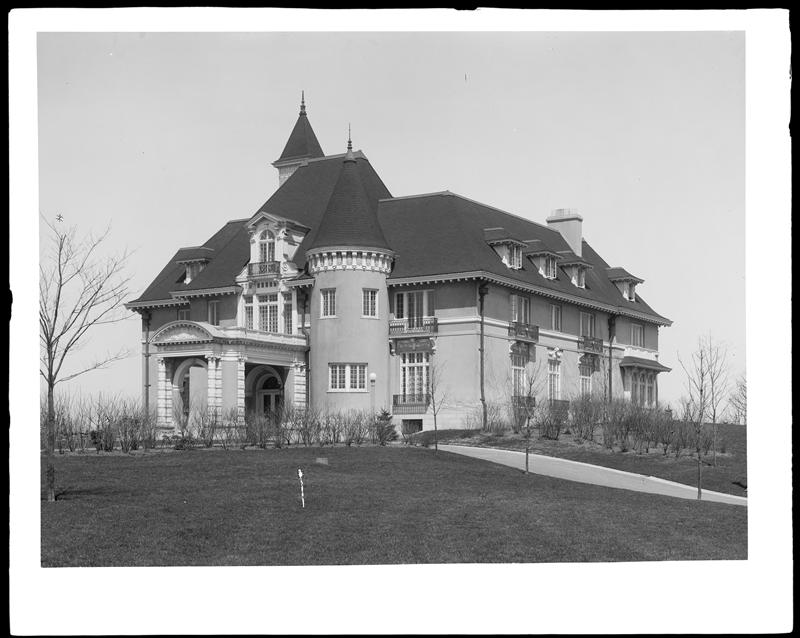
If you’ve ever driven along the Henry Hudson Parkway, you may have wondered about the enormous, vine-covered granite arches on the steep slope of Fort Tryon Park at the northern end of Manhattan. What appears to be the remnants of an old Roman aqueduct, like the Pont du Gard in southern France, is actually part of the most elaborate and most expensive private driveway in New York City.
In 1907, Cornelius Kingsley Garrison Billings, the multi-millionaire equestrian renowned for his celebrated “Horseback Dinner” of 1903, moved into his lavish new residence situated 250 feet above the Hudson River. He shared the huge Louis XIV château, which was called Tryon Hall, with his wife Blanche E. MacLeish Billings, two children, and 23 servants.
The estate was considered among the most lavish private houses in Manhattan, and featured several large towers, a bathhouse with a 75-foot marble swimming pool (heated), squash courts, a “fumed oak” bowling alley, and a yacht landing on the Hudson at Dyckman Street.

One of Billings’ favorite pastimes was driving his four-in-hand (a carriage with four horses) along the newly paved Riverside Drive below Tryon Hall. On a whim, he decided that it would be wonderful to be able to enter his estate by carriage via Riverside Drive rather than from Fort Washington Road, which was a much easier access.
The only problem with this idea was that a driveway would have to ascend 100 feet within a section of property that was 200 feet wide by 500 feet long – and it would require an easy grade to accommodate the horses and carriages.

According to a report in The New York Times in September 1912, Billings’ neighbor, W.C. Muschenheim of the Hotel Astor, came up with an idea for mapping out the driveway. His advice:
“You aren’t in any great hurry, so why don’t you have it done right? Put one of your cows on that land and give her time to lay out a path up that hill. Trust her to find the easiest and most comfortable grade.”
Sure enough, over time, the cow traced out the easiest and best way to her barn at the top of the hill. The result: A 1600-foot double-switch-back drive built to follow her tracks.
Billings proceeded to hire the architects Buchman & Fox to design this extravagant driveway to his estate. They laid out the roadway and proposed a great arched stone gallery to accommodate a portion of the roadway that would leave the face of the ridge. By creating this 50-foot-high gallery, or bridge, the architects were able to create a driveway with a 6 percent grade.

Take a Look Inside Tryon Hall
Fortunately for us, there was a publishing fad among the rich and famous at the turn of the century in which the privileged showcased their wealth in leather-bound books. These books were printed in limited, private runs, and are highly prized colletibles today. Billings commissioned a book in 1910 that offers a glimpse inside his private realm at Fort Tryon. You can view the volume here at the blog My Inwood.
If you want a great view of the switch-back driveway, go to Google Earth and type in Fort Tryon Park. Although Tryon Hall burned in a spectacular fire in 1926, the famous driveway and the old gatehouse (now near the entrance to the 67-acre Fort Tryon Park) still exist on the property.
Fort Tryon Park Replaces Tryon Hall

In 1916, Billings sold his estate to John D. Rockefeller Jr., who had plans to demolish the house and donate the property and about 40 acres of neighboring land to the city for Fort Tryon Park. The mansion remained standing until March 6, 1926, when it was destroyed by a spectacular fire.
The 67-acre Fort Tryon Park was completed in 1935. Billings’s double switchback driveway is still intact under a layer of asphalt, near the southern end of the park, just a few blocks from the 190th Street subway station.




That is one of the most extravagant driveways I have ever seen.
Wonder what a modern take on the same design would result in…